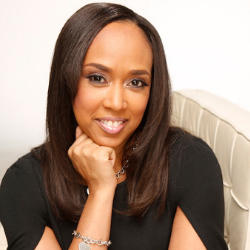
We not Me! In an individualistic society, how can we emphasize collaboration and inclusion to ensure people feel seen, heard, and understood? How can leaders be more inclusive and foster this change? Our experts explore how we can create a culture shift from individualism to inclusion, and the attributes and competencies a leader must have in order to create this change.
Answers From the Experts:
 Lyn Turknett, Co-founder and Co-chair, TLG
Lyn Turknett, Co-founder and Co-chair, TLG
How do we move from individualism to a culture of inclusion and collaboration where invisible people are seen and unheard voices are heard?
It seems to me this might be the key question of our time. I see two big forces moving us quickly toward a “we not me” future, although the pull of hierarchy, tradition, and leadership ego will keep moving us back.
- Tight labor markets are a force moving us toward a more collaborative, inclusive future – people will always choose a workplace where they are respected and seen, and where their voices are heard.
- Companies that manage to create a culture of inclusion and an operating system that uses all brains will simply out-compete more traditional cultures. Two of my favorite examples are Haier, profiled by Gary Hamel in The End of Bureaucracy, and Ford under Alan Mulally. Haier is an example of a new distributed organization, where workers are more completely in charge of decision making and more directly connected to customers and partners. Ford under Mulally still had a hierarchy and more traditional manufacturing systems, but the change in culture created by his leadership was so profound that people felt included, free to speak, and free from fear.
Figuring out the “how” of moving toward an inclusive, “all-voices and all-brains” culture will be a continuing question but changing leadership attitudes and behaviors will be key. In our current business culture, changing the “tone at the top” is one of the fastest ways to change the culture, and I’ve seen the power of that change so many times. I think we learn best from role models, and there is immense power in looking at how others have done it.
Bob and I were privileged to attend the CEO of the Year award dinner at the NY Stock Exchange in 2011. The award is given each year by Chief Executive Magazine, and the winner that year was Alan Mulally of Ford. We knew that Mulally had led a turnaround, but we got to hear more of the story, and to get a feel for Mulally’s authentic, respectful, humble-yet-hard-driving approach. Mulally had come to Ford from Boeing, and he brought with him his famous “Working Together” approach. We heard for the first time his famous “red, yellow, and green” story. The company was losing 17 billion dollars a year, but in the first weekly Business Process Review meeting of the top 256 leaders, every measure tracked on the red-yellow-green dashboard was “green.” It’s not easy to get people who have been rewarded for “looking good” and punished for admitting problems or asking for help to tell the truth.
Shane Parrish interviewed Mulally on his podcast recently, and Mulally tells the story again there. He says, “I stopped the meeting a few weeks in a row and said, “Is there anything in any of your areas of responsibility that’s not going well? We are losing $17 billion.” What’s interesting to me is that Mulally never seems to have exploded in anger or frustration – he just continued to respectfully ask the question until someone got the courage to admit a problem. The head of North America broke the pattern. He said that they were having trouble with the lift-gate of the new Ford Edge and changed his chart to three reds. There was silence at first, but then Mulally started clapping – and others joined in. Other people in the room also had ideas for solutions, and things began to quickly change.
Mulally’s “Working Together” system is built on trust, discipline, and profound mutual respect, and the values and expectations infuse the culture and drive behavior. The name comes from his parents, who used to say, “By working together with others you can have the most positive contribution to the most people.” His mother used to say, “The purpose of life is to love and be loved,” and Mulally is not afraid to use the word in business. Some of the principles of his Working Together system, which he calls a “culture of love by design.” are:
- People first – love ‘em up.
- Include everybody.
- Come together around a compelling vision, a comprehensive strategy, and a relentless implementation plan.
- Have clear performance goals and one plan.
He also says the Working Together system expects certain behaviors, like “being positive, having a find a way attitude, respecting each other, listening to each other, helping each other, appreciating each other” – and there is zero tolerance for violating them.
Forbes magazine recently said that Mulally is the kind of leader we need now. I’ve never seen a better example of the “power of we.”
What do you see as the top three traits of inclusive leaders?
It’s tough to pick just three, but ones that come to mind are:
1. Curiosity – Inclusive leaders are curious, willing to learn from others, and humble. 2. Empathy – Inclusive leaders know that the most important thing they need to create, for both high performance and a culture of belonging, is psychological safety, and, in the language of the Leadership Character Model, it takes empathy and emotional mastery to do that. We learned from Google’s famous Project Aristotle about the importance of psychological safety, and research keeps validating its power. 3. Integrity and authenticity – inclusive leaders are authentic, and their behavior is aligned with their values.Another leader who was a role model of inclusive, character-driven leadership was Fran Kinne. Like Alan Mulally, she grew up in the Midwest, and like him, she often quoted maxims learned from her parents. The one I heard most often was from her mother – “Life is not about us; it’s about others.”
I’ve written about her often. She was Bob’s humanities teacher when he was an undergraduate at Jacksonville University, and she became the first female university president in the state of Florida. She made every other person she met feel important, and I’ve never met a better leader. She died in 2020 at 102, and I wrote this in an article just after the last time we saw her in 2019:
“Fran was an explicit conveyor of her values, and I imagine that she set the stage well with any team. She said frequently that she learned from her mother, ‘Life is not about us. Life is about others.’ She lived with humility and respect combined with extreme optimism and extreme confidence and she instilled that “culture” into even a dinner table conversation.“
She lived for “we.”
 Dr. Cherry Collier, MCC, DEI&B Expert and TLG Strategic Partner
Dr. Cherry Collier, MCC, DEI&B Expert and TLG Strategic Partner
How do we move from individualism to a culture of inclusion and collaboration where invisible people are seen and unheard voices are heard?
First, when you are thinking about true inclusion, you must accept and meet people where they are. What that means is, America by nature, is an individualistic society. To think we won’t be individualistic is unfair and unfortunate. We are a collectivist culture, and there is value to both cultures if you are thinking about the Hofstede’s cultural dimensions theory. I don’t think it’s about moving from individualism so much as celebrating the uniqueness that exists for whoever you are. We must start to understand and value that we don’t have to be exactly alike to be who we need to be.
For example, many of us used to see people who had hair that was a non-traditional color, and we would look at them very differently than we do today. Today, we see all types of people with different hairstyles and colors, and that is more mainstream. That’s their way of showing who they are and how they are showing up, and rather than adding a value to something that is, it’s seeing the value of who people are. Taking the time, for instance, to notice that we have a lot more in common with people who, back in my day were known as punk rockers, than we do that’s different. We have a lot more in common with people in general than we do different. We are 99% the same in DNA, after all.
It’s all about allowing that person’s differences to be celebrated, and not having to show up exactly like you that really gets to inclusiveness and collaboration because you are valuing who they are. When you think about “Sawabona”, which means “I see you,” and the opportunity to see people, and when you see them, they respond “Shikoba,” which means “I am here,” it’s because they show up and they are seen.
Allowing individualism is a way for people to be seen, heard, and understood, and understanding that we don’t all have to be the same is crucial!
What do you see as the top three traits of inclusive leaders?
When I think about diversity and inclusion, diversity is about the variety and inclusion is about accepting who you are, no matter how you show up. The first thing I thought about around this question, is the concept that an inclusive leader to me is first and foremost a leader, and to lead, I think that Jim Kouzes and Barry Posner in their book, “The Leadership Challenge”, did a phenomenal job explaining through their research what leadership looks like. It’s tough for me to pick the top three out attributes out of their five, so I’m going to list all five. Perhaps as I list them, we can narrow it down. Here are my top three:
- Model the way: I think that an inclusive leader, by definition, is a leader, and leadership is influenced by using that influence to move people in a direction. To do that, you must model the way. If you want to be an inclusive leader, you must model it. You can’t say “I will do this” and then tell me “You do that.”
- Ability to inspire a shared vision. That shared vision is what others espouse and to be like, feel, and do. When you think about inclusion, I feel that the leader wants me to be included, and that shared vision makes me want to participate and meets me where I am.
- Challenges the process. What makes this so phenomenal is that people have a belief that we all must agree. That’s not inclusion – we can agree to disagree agreeably. When you think of the scientific method, we create a hypothesis, go through the steps, and draw a conclusion. But we don’t stop there. We start over and when we do, we challenge the process that we’ve gone through of understanding. So, challenging the process is a part of the inclusive process because it allows us to share our thinking and share our ideologies. We don’t have to all agree, but we can have what we call cultural humility and through that, we can be humble, and we can recognize that not just my culture is what needs to be accepted. I think that concept is so important for everyone. We want to challenge the idea of how to meet in the middle.
Read Dr. Cherry’s full article on inclusive leadership here.
 Tim Huff, VP of Leadership Development, TLG
Tim Huff, VP of Leadership Development, TLG
How do we move from individualism to a culture of inclusion and collaboration where invisible people are seen and unheard voices are heard?
Earlier in my career, I was part of an organization’s leadership team of about a dozen leaders. Included in the team were three or four strong personalities who were quite forceful in their communication style. During meetings, it was very routine for three or four folks to do 80-90% of the talking and everyone else to sit quietly and listen to the exchange. For anyone to engage in the discussion required some effort to jump in and interrupt the others. Now looking back, I wonder how many amazing ideas or creative solutions were left unsaid from everyone while these thee or four team members drove the discussion.
This example highlights the need for leaders to create an environment where all voices are able to be included in discussions. Here are some ways I’ve seen successful leaders of character accomplish this kind of culture.
A first step can be to simply acknowledge what voices are not being heard. Although sometimes it’s obvious when some team members aren’t speaking up, often it’s more subtle than that. Leaders will need to be continuously observant about what conversations are happening and decisions are being made in what venues and in what meetings. An inclusive leader will often ask “who else should be included in this discussion, ” “who else can we invite to this,” or “who haven’t we heard from on this topic?” Even in a fast-moving organization with quick decision making, it will make a huge difference to take a moment to ensure the right voices are in the room. A second step involves proactively inviting others to raise their voice. This often requires a culture of strong psychological safety for everyone to be comfortable expressing their thoughts and opinions without ridicule or reputational damage, but even making the explicit invite can be the tipping point for someone to get engaged. A third step includes one on one encouragement. If a leader recognizes that a team member isn’t offering their thoughts on a topic and suspects that they are holding back, the leader should try to encourage the team member one on one. This would be a great opportunity to engage in coaching and mentoring to provide the support that the person may need. On top of that, being a sponsor for the person and literally creating the space in discussions that would make it easy and natural for the person to be engaged.What do you see as the top three traits of inclusive leaders?
- Empathy, which is one of the most powerful traits a leader of character can have, is the first trait. Through empathy, the leader can be keenly tuned in to times when team members might not feel comfortable expressing their thoughts and opinions. Empathetic leaders can also be good at reading a room to see what obstacles might be in the way to having an inviting atmosphere and taking action to remove the obstacles.
- Strong collaboration skills can be very effective in creating an inclusive culture. Collaborative leaders are naturally focused on engaging with others to ensure a topic is being looked at by various perspectives and will naturally invite many voices to be heard. Even in times when urgent decisions need to be made, a collaborative leader would ensure that perspectives that can be included would be included. In addition, the leader would ensure the decision was communicated widely to ensure everyone who would want to know is informed.
- Lastly, a strong sense of sponsorship can make a huge difference. Sponsors not only take the time to engage, mentor, and support voices that need to be heard, they are proactive in getting these voices in front of the right people, the right discussions, or the right audiences. Many times, especially in large organizations with highly established cultures or hierarchies, proactive sponsorship can be the main ingredient needed to create a truly inclusive culture.
 Cindy Cheatham, Senior Consultant, TLG
Cindy Cheatham, Senior Consultant, TLG
How do we move from individualism to a culture of inclusion and collaboration where invisible people are seen and unheard voices are heard?
Although we grow up in a society that emphasizes an individual work ethic, success in the workplace requires an ability to work well with others. Moving toward inclusive and collaborative work involves many strategies. The most important is that leadership at the top values and fosters a culture of inclusivity and collaboration. This includes leadership working hard to ensure that it supports and promotes inclusive, diverse and collaborative management teams. The organization must also develop strategies and structure to support this culture which involves everything from company values and rewards systems, hiring systems, performance management, training and management and leadership development.
Our society is still quite segregated and education is not geared enough to diverse teams. Therefore many employees lack cultural competency and the ability to work well in a team or across departments. Organizations increasingly need to incorporate learning and hands-on projects into their training and onboarding and into their leadership to support development of these competencies.
What do you see as the top three traits of inclusive leaders?
- Gratitude – I imagine a team meeting (C-Suite and Mid-Level) where the leader intentionally schedules a block of time to facilitate a conversation around “gratitude”. How will this team express itself to others for any form of assistance or kindness that is practiced?
- Valuing people with diverse cultures, experiences and approaches. They do not see the world as a monolith but see it as colorful and full of many rainbows of personality, perspectives, approaches, talents and even beliefs. They are curious to learn about people’s backgrounds and experiences and enjoy the process of growing themselves as a culturally competent leader.
- Investment – These leaders know that it takes investment in a strategy to foster a culture of inclusive and collaborative leadership. They put their money where their mouth is and prioritize strategies to support inclusive and collaborative culture. They also have an optimistic and patient perspective to do the work over the long-term and not just as a knee-jerk reaction.
 Marty Gupta, VP of Strategic Services, TLG
Marty Gupta, VP of Strategic Services, TLG
How do we move from individualism to a culture of inclusion and collaboration where invisible people are seen and unheard voices are heard?
Ever since the first human went to the next village to barter, and later traveled to distant lands to trade, business has played a key, often unheralded role in bringing different peoples and cultures together. While there is much focus today on diversity in hiring, marketing, and procurement, I would like to highlight the power of small autonomous teams. Agile enterprises use cross-functional teams that are assembled for short periods of time to address specific strategic or operational issues.
Working on these teams can be challenging. Participation is typically part-time and team members may not have worked with one-another before. Team members from different functions often approach the task from different perspectives and may use different problem-solving practices. While there may be an assigned team leader or owner, lines of authority may be blurred, requiring new forms of influence and accountability. Time is limited.
These teams are silo-busters; cross-functional teams increase enterprise-wide understanding. They speed the use of agile tools, build leadership skills (e.g. how to influence without authority), and solve tough problems. Most of all, they create a culture of collaboration and inclusion, especially when comprised of diverse members.
What do you see as the top three traits of inclusive leaders?
- Humility – Inclusive leaders put the organization’s mission above themselves.
- Management by Walking Around (MBWA) – Inclusive leaders get out of their office and wander around the organization, listening and getting to know what others are doing. They recognize that innovation often comes from the edge of the organization.
- Empathy and Understanding – Inclusive leaders are well-informed. They keep up on current affairs and world events, appreciate history, and – as Steven Johnson recommends in his book, “Farsighted” – read novels.
 Anne Quiello, Senior Consultant & Director of Women in Leadership, TLG
Anne Quiello, Senior Consultant & Director of Women in Leadership, TLG
How do we move from individualism to a culture of inclusion and collaboration where invisible people are seen and unheard voices are heard? What do you see as the top three traits of inclusive leaders?
Be intentional around articulating the meaningful purpose of the organization being led, asking three questions:
- How will our existence have a positive impact on others outside the organization?
- What can we do to have a positive impact on each other within this organization?
- What do we need to do to have a positive impact on ourselves?
Leaders need to create a culture with “how the work gets done” that fulfills the purpose and builds an a positively charged environment where everyone feels included as part of something impactful. As Lisa McLeod, author of “Leading with Noble Purpose” claims, profits follow purpose.
To hear more on purpose, register for the January 20, 2023 Women In Leadership Signature Series virtual event to hear Lisa McLeod, Author, Keynote Speaker, and HBR Contributor, discuss her work around “Leading with Noble Purpose.”
Build Leadership Trust
Earn the trust of those being led. Be humble, vulnerable, and admit mistakes. Apologize when wrong and create a safe environment for others to do the same, recognizing that a mistake does not equal failure. Be fully present with each person in conversation and empathize through listening and acknowledging emotions. Replace judgement with curiosity using what and how questions and never, ever unleash anger toward followers or risk the total loss of trust.
To learn more about building leadership trust, read “Heart-Centered Leadership, Lead Well, Live Well,” by Susan Steinbrecher and Joel Bennett, Ph.D.
Bring Out the Best in Everyone
Be a credible, visible leader. Get out of the office, visit employees where the work gets done, and ask questions with a sincere desire to know the answers. If commitments are made, follow-up and follow-through, as quickly as possible. Recognize that minority and women employees are sometimes reluctant to speak up or ask questions. Find ways to include them in conversations and/or create employee resource groups to enable open, honest, valuable discussions with leadership. Find ways to bring people together and bring out the best in everyone in your organization.
Leaders are constantly watched and imitated – the good and the bad.
 Jennifer Torres, MCC, Senior Consultant, TLG
Jennifer Torres, MCC, Senior Consultant, TLG
How do we move from individualism to a culture of inclusion and collaboration where invisible people are seen and unheard voices are heard?
Workplace Equilibrium is about bringing systemic wellbeing to the entire organization. Intentionally building organizational health results in a connected, empowered, productive workforce ready to achieve new heights. It is built on a solid foundation of trust and respect. Employees are more committed to excellence, are more likely to endorse the company as a great place to work, feel safe communicating their ideas freely, and will take the initiative to engage in creative problem solving.
In addition to traditional leadership coaching, it is important to recognize the critical importance of team coaching in order to ensure people feel seen and heard and included in the process at a systemic level. Your people are critical stakeholders to organizational success, and without stakeholder buy-in, no culture transformation will be successful.
What do you see as the top three traits of inclusive leaders?
- Are self-aware, authentic, and willing to be vulnerable.
- Learn about cultural diversity and seek to engage and integrate individuals from all backgrounds.
- Acknowledge and value input from everyone on the team.
Explore the rest of our team!

